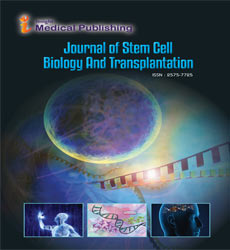ISSN : 2575-7725
Journal of Stem Cell Biology and Transplantation
Amyotrophic Lateral Sclerosis patients treated with Pluripotent autologous adipose stem cells and case reports
Cristina Bertolotto
CBVX-Stem Inc.
Received Date: 2022-09-07 | Accepted Date: 2022-09-14 | Published Date: 2022-09-25
Abstract
Amyotrophic Lateral Sclerosis (ALS) a devastating neurodegenerative and autoimmune disease that until today there is no cure for. Currently, there are multiple clinical trials with different drugs and stem cell treatment trying to find a cure for ALS. ALS is a disease that attacks the central nervous system, specifically motoneurons and myelin. These cells are going through apoptosis, and rapid demyelination occurs. This translates into the patients as a loss of muscles and weight in a short period of time. The patients lose the capability to control movements. Usually, when this disease starts, it is more prominent on one side of the body. As the disease progresses, all muscles are compromised. In this study, 6 ALS patients for more than one year has been followed. They are treated with Pluripotent autologous adipose stem cells (PAASC) via intravenous and intra spinal. The PAASC are obtained through a small liposuction with a local anesthesia. The fat tissue is washed with saline and centrifuged. The PAASC are separated from the tubes. The ALS treatment protocol is based on trying to: 1. Avoid the advance of the disease; 2. Regenerate motoneurons and damage of the nerve tissue; 3. Repair the collateral damage that this disease can create. In addition to the treatment with PAASC, daily physical therapy to the protocols has been added in order to stimulate the nervous system to create and maintain neuro-muscular synapses. A diet for the patients has been developed. This anti-inflammatory diet helps the patient maintain body muscle mass and stimulates the nervous system with foods that keep the nervous system alert. The PAASC treatment is repeated on each patient every three to six months. Improvements in the patients’ symptoms have been seen. The equilibrium, range of the movement, muscle strength, and muscle body mass improved. A deceleration of the advances of the disease has also been seen. The patients assure, the disease is not advancing as rapidly as it was before the stem cell treatment. In order to have objective data, the dietician and the team closely followed all the anthropometrics measurements, and the body muscle mass compared to the body mass has been viewed. Communication with the physical therapist who looks closely at all the body muscle strength and who can tell if the patient maintains their muscle strength has been maintained. Conclusion: The PAASC treatment is effective in patients with ALS. The treatment at least slows down the evolution of this disease and keeps the patients in good and stable condition. There is so much to learn and study in this area, and specifically with this type of stem cells. The contribution of the team to this devastating disease has been observed for patients with ALS which is very significant.
Open Access Journals
- Aquaculture & Veterinary Science
- Chemistry & Chemical Sciences
- Clinical Sciences
- Engineering
- General Science
- Genetics & Molecular Biology
- Health Care & Nursing
- Immunology & Microbiology
- Materials Science
- Mathematics & Physics
- Medical Sciences
- Neurology & Psychiatry
- Oncology & Cancer Science
- Pharmaceutical Sciences
